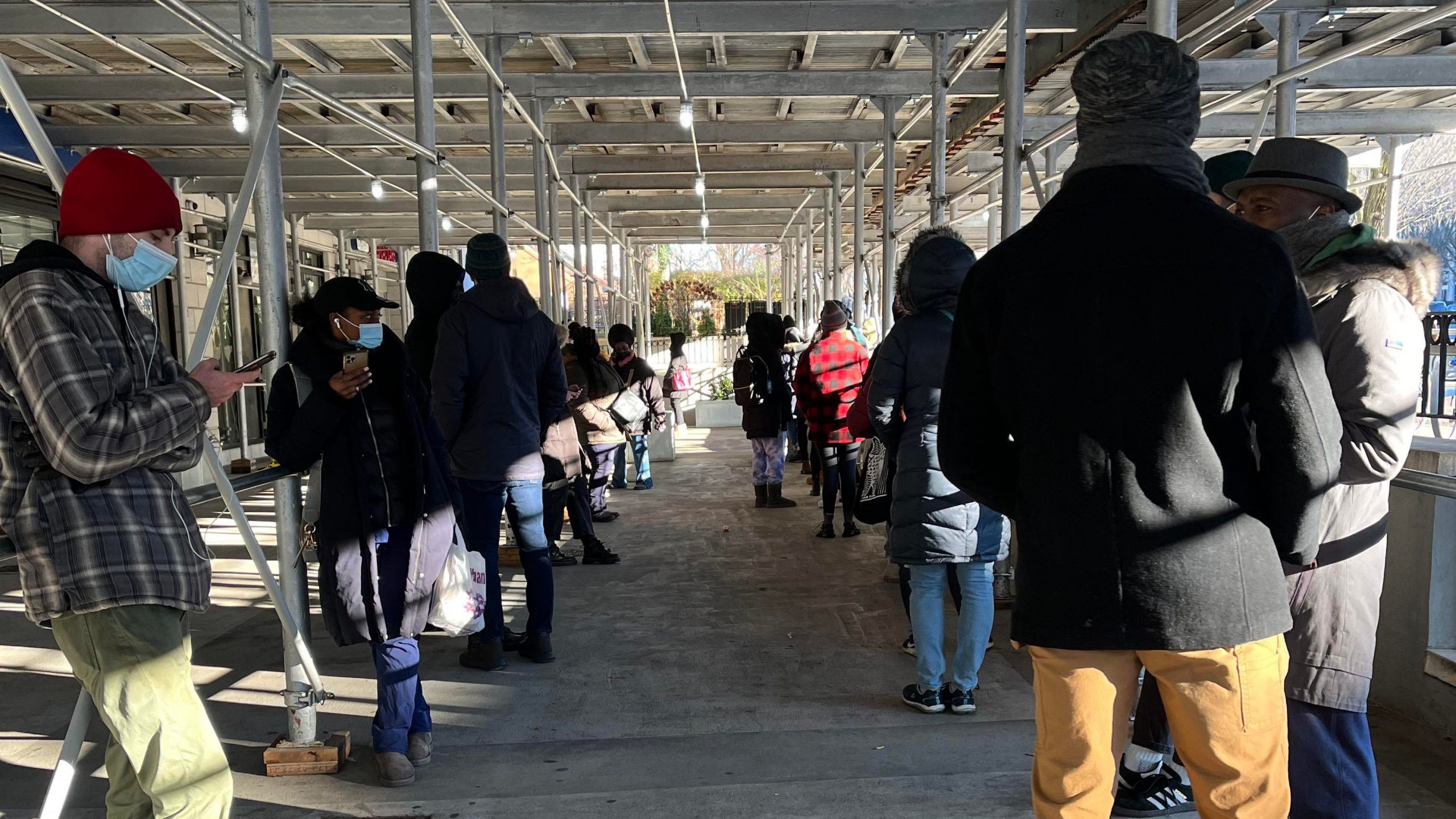In the United States, daily COVID-19 cases have nearly doubled since October. The sudden surge has put a massive strain on the country’s already inadequate COVID-19 testing apparatus. Across the country people have reported facing waiting several hours to get tested, if they manage to get a test at all.
Although the US overpurchased and hoarded vaccines when they first became available, guaranteeing residents relatively easy access to vaccinations, the percent of fully vaccinated people in the country still sits at 62%. Furthermore, the recent Omicron variant appears to be more transmissible than prior variants even among the vaccinated.
Another aggravating factor in the situation has to do with the country’s private healthcare system and the underfunded public health sector. The burden of COVID-19 testing and vaccinations has largely fallen on pharmacy megacorporations like CVS and Rite-Aid, rather than public health facilities.
Pharmacists at these corporations have reported being overworked and burnt out from working extra hours, taking fewer breaks, and dealing with abuse from customers who are angry over the inefficiencies. Some pharmacists, fed up with long hours, low pay, and abuse from customers, have taken to social media, calling for protest measures such as taking a “sick out”, in which multiple workers call in sick at the same time in order to put pressure on the company for better working conditions.
New York City back in the spotlight
New York City, which was the “epicenter of the epicenter” of the virus during the first wave of the pandemic, is an important case study in the US response to the Omicron surge. During the first wave of the pandemic, the city of eight million made headlines globally as it struggled to respond to the raging pandemic. Images circulated of mass graves used to bury the city’s victims of the virus, of cooling trucks stationed outside hospitals filled with dead bodies, and of exhausted healthcare professionals in overwhelmed ICU units.
Last Friday, New York State recorded the highest number of cases on a single day during the whole pandemic. Today, despite the traumatic experiences endured by many New Yorkers during the height of the pandemic, city officials remain underprepared. The city government led by Mayor Bill de Blasio, closed testing sites due to lack of demand on the cusp of the Omicron surge. Michael Katz, who runs NYC Health & Hospitals, defended the decision to roll back on tests: “I’m sorry that demand was so enormous over the last few days. We did not anticipate so much news about omicron, we did not anticipate that the supply chain would run out of the home tests.”
As a result, New Yorkers are now having to face hours-long lines in the cold for COVID-19 testing, potentially exposing themselves to others carrying the virus. Urgent care centers and mobile testing sites alike are running out of testing capacity well before their official closing times, sending away many who desperately need tests. More and more pharmacies are running out of at-home rapid tests, leaving pharmacists to deal with abuse from angry customers.
New York City is overwhelmed, but for the United States, this may be only the beginning. The major metropolitan area has a 70% vaccination rate. As Omicron surges through the rest of the country, where there are lower vaccination rates due to the popularity of anti-vaccine propaganda or a lack of resources, some physicians worry about the overburdening of hospitals which will inevitably cost lives.





